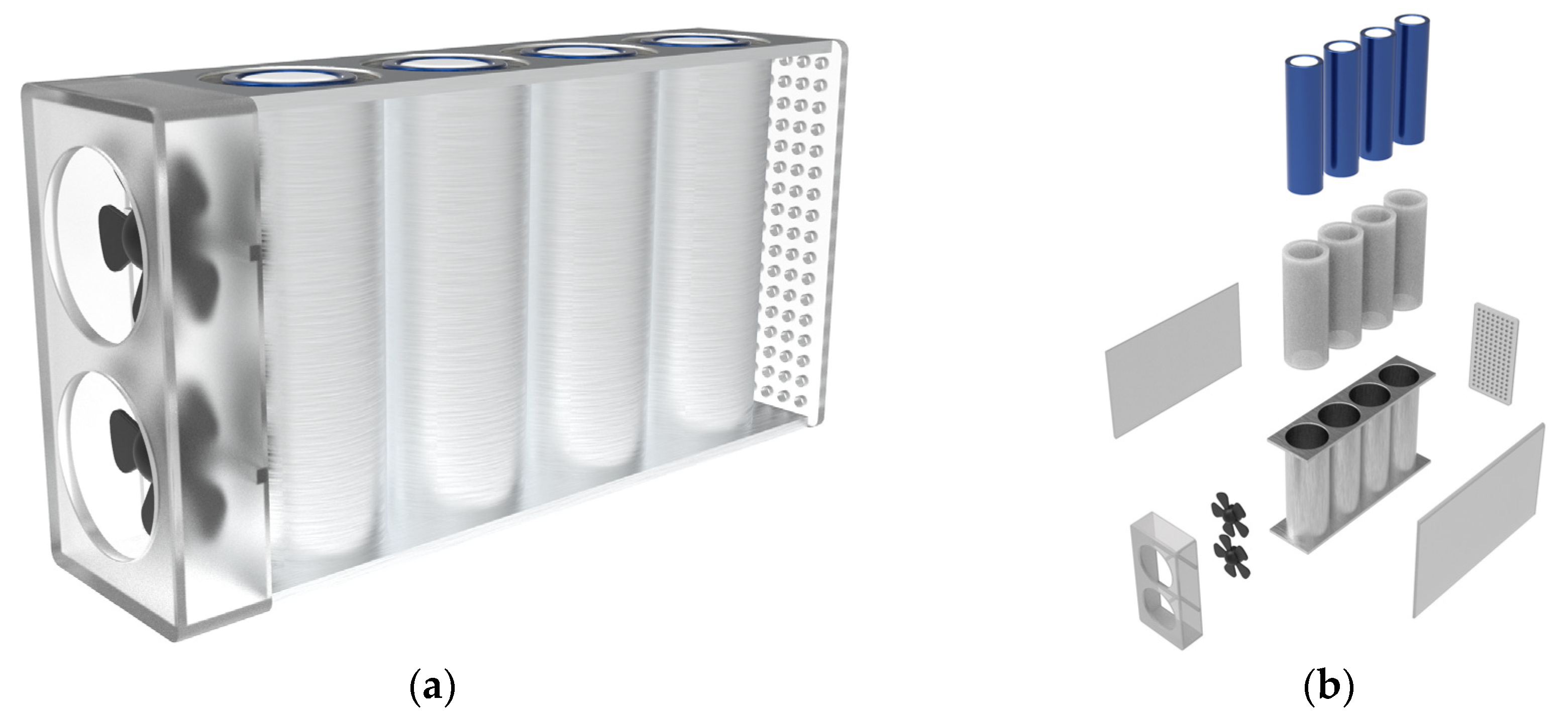World Electric Vehicle Journal : Proposing a Hybrid Thermal Management System Based on Phase Change Material/Metal Foam for Lithium-Ion Batteries
Authors: Soheil Saeedipour, Ayat Gharehghani, Jabraeil Ahbabi Saray, Amin Mahmoudzadeh Andwari, and Maciej Mikulski.

The charging and discharging process of batteries generates a significant amount of heat, which can adversely affect their lifespan and safety. This study aims to enhance the performance of a lithium-ion battery (LIB) pack with a high discharge rate (5C) by proposing a combined battery thermal management system (BTMS) consisting of improved phase change materials (paraffin/aluminum composite) and forced-air convection. Battery thermal performance is simulated using computational fluid dynamics (CFD) to study the effects of heat transfer and flow parameters. To evaluate the impact of essential parameters on the thermal performance of the battery module, temperature uniformity and maximum temperature in the cells are evaluated. For the proposed cooling system, an ambient temperature of 24.5 °C and the application of a 3 mm thick paraffin/aluminum composite showed the best cooling effect. In addition, a 2 m/s inlet velocity with 25 mm cell spacing provided the best cooling performance, thus reducing the maximum temperature. The paraffin can effectively manage thermal parameters maintaining battery temperature stability and uniformity. Simulation results demonstrated that the proposed cooling system combined with forced-air convection, paraffin, and metal foam effectively reduced the maximum temperature and temperature difference in the battery by 308 K and 2.0 K, respectively.

In the same category
- “Driving Collaboration in Europe's Thriving EV Sector: opportunities for emissions reductions”
- Autel Energy bringing innovative new EV chargers across Europe
- Baden-Württemberg on its way to becoming the top location for e-mobility
- ECO/G
- Empowering the Transition to Electric Mobility: Equans' Smart Charging Solutions
- Hyundai
- Leapmotor
- Sungrow EV Charging Introduced Low and Fast EV Charging solutions
- Total Energies
- Why Submit to World Electric Vehicle Journal?
- World Electric Vehicle Journal : Analysis of Energy Flow in a Mid-Sized Electric Passenger Vehicle in Urban Driving Conditions
- World Electric Vehicle Journal : Battery Health Monitoring and Degradation Prognosis in Fleet Management Systems
- World Electric Vehicle Journal : Evaluation of a Back-up Range Extender and Other Heavy-Duty BEV-Supporting Systems
- World Electric Vehicle Journal : Implementation Schemes for Electric Bus Fleets at Depots with Optimized Energy Procurements in Virtual Power Plant Operations
- World Electric Vehicle Journal : Investigation and Development of Textile Lightweight Bodies for Urban Logistic Vehicles
- World Electric Vehicle Journal : Leveraging Connected Vehicle Data to Assess Interstate Exit Utilization and Identify Charging Infrastructure Investment Allocation Opportunities
- World Electric Vehicle Journal : Performance Comparison of Si IGBT and SiC MOSFET Power Module Driving IPMSM or IM under WLTC
- World Electric Vehicle Journal : Perspectives on Modeling Energy and Mobility Transitions for Stakeholders: A Dutch Case
- World Electric Vehicle Journal : Proposing a Hybrid Thermal Management System Based on Phase Change Material/Metal Foam for Lithium-Ion Batteries
- World Electric Vehicle Journal : Second-Life Batteries Modeling for Performance Tracking in a Mobile Charging Station
- World Electric Vehicle Journal : The “Semiconductor Crisis” as a Result of the COVID-19 Pandemic and Impacts on the Automotive Industry and Its Supply Chains
- World Electric Vehicle Journal : Thermal Analysis of Coupled Resonant Coils for an Electric Vehicle Wireless Charging System